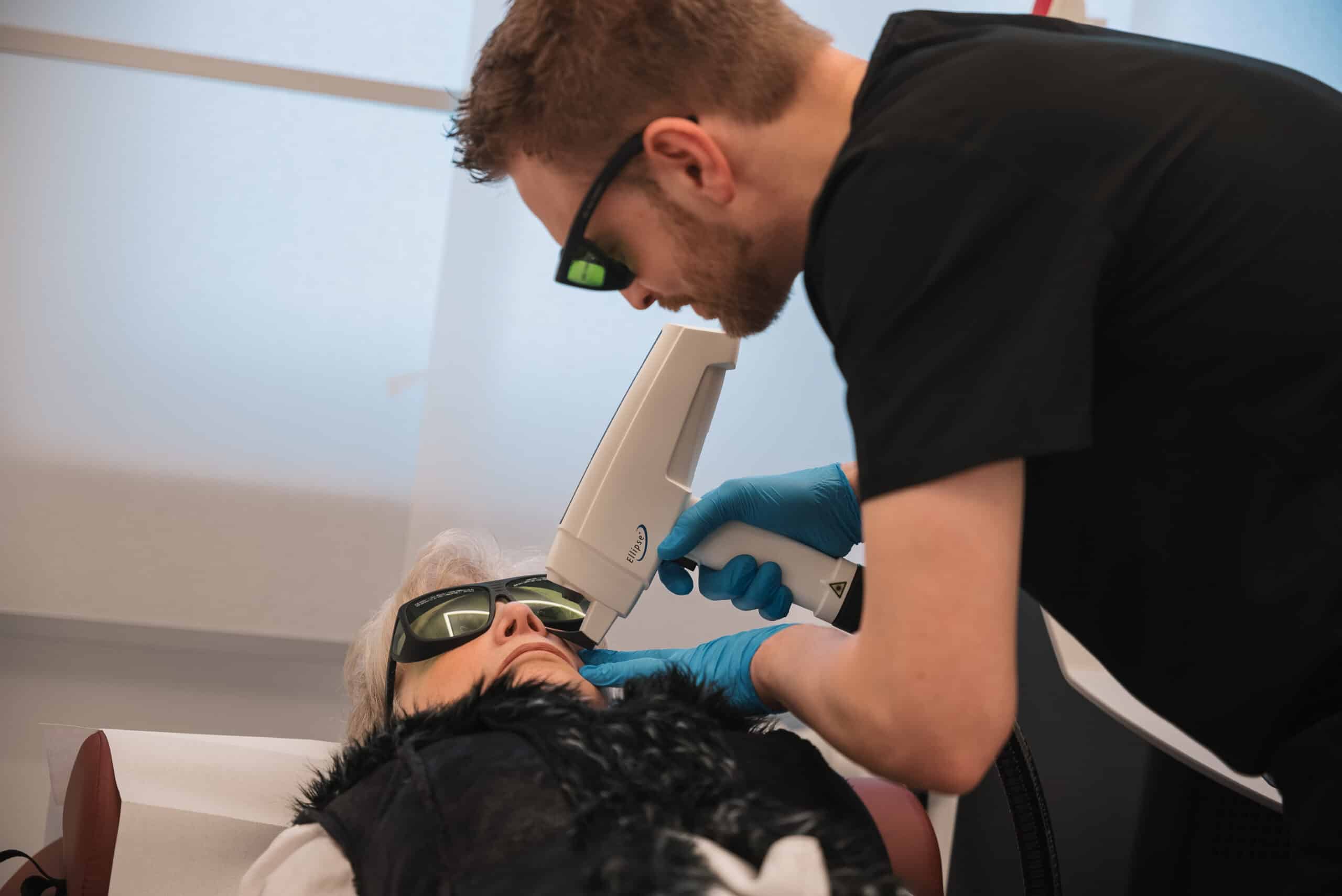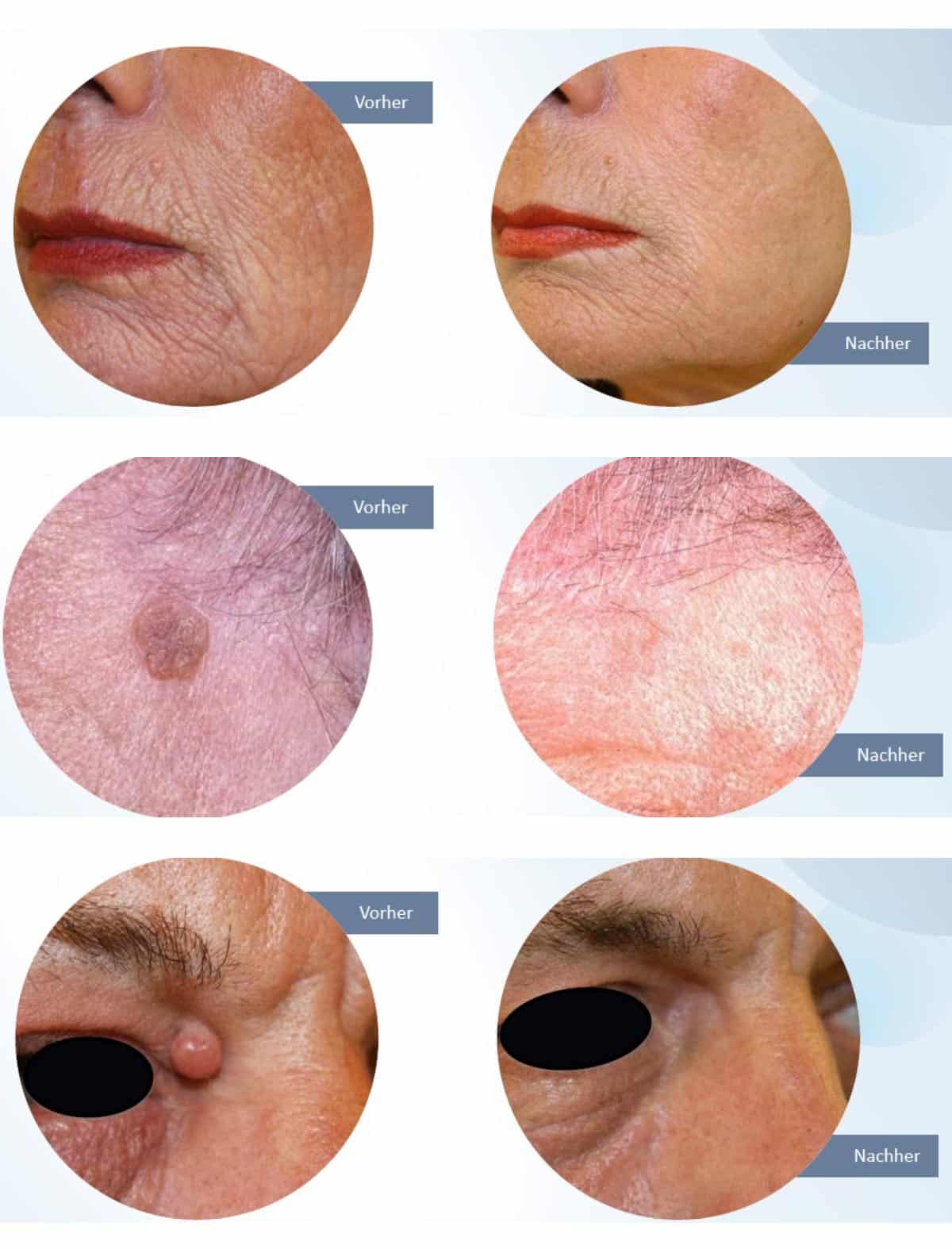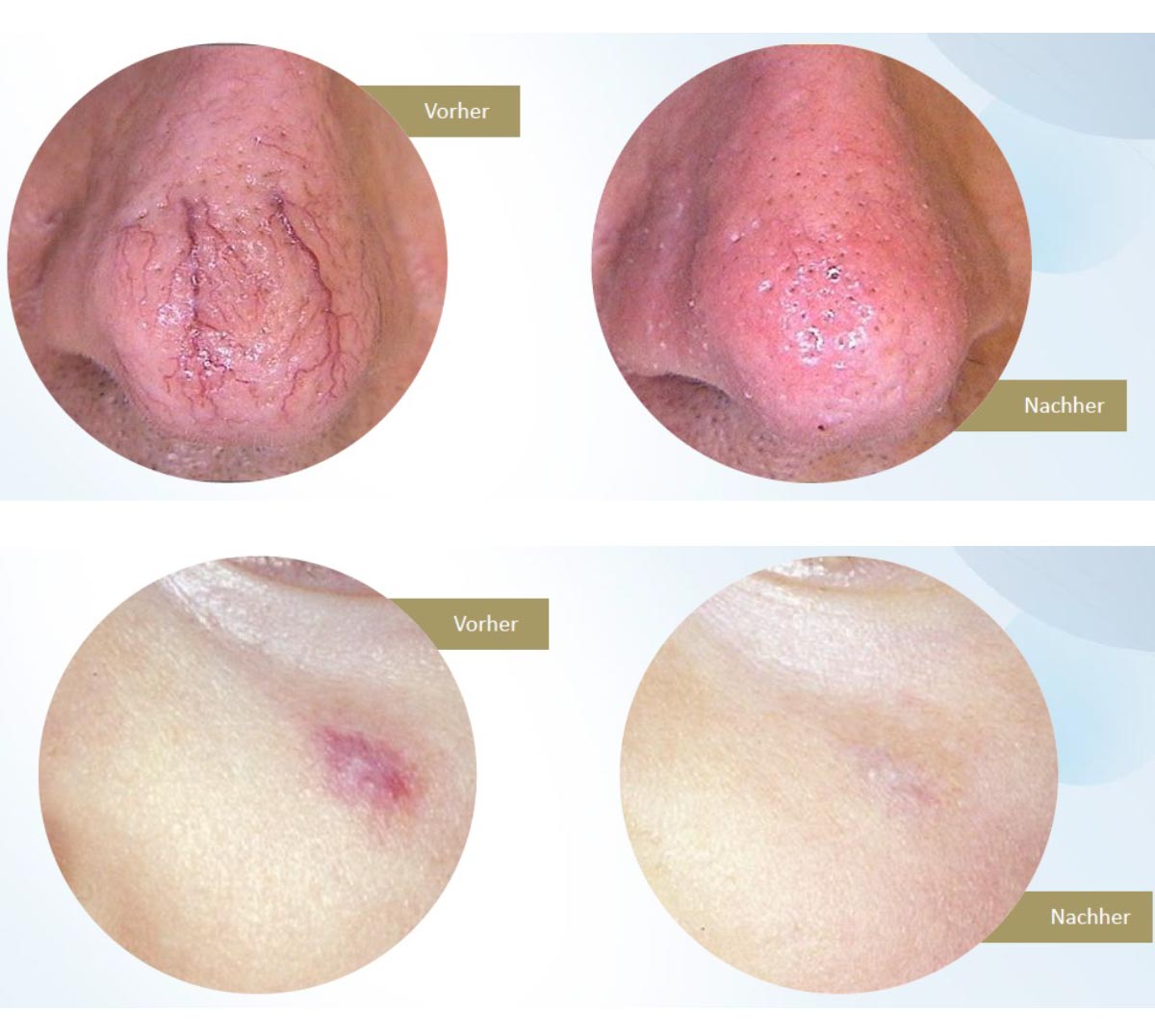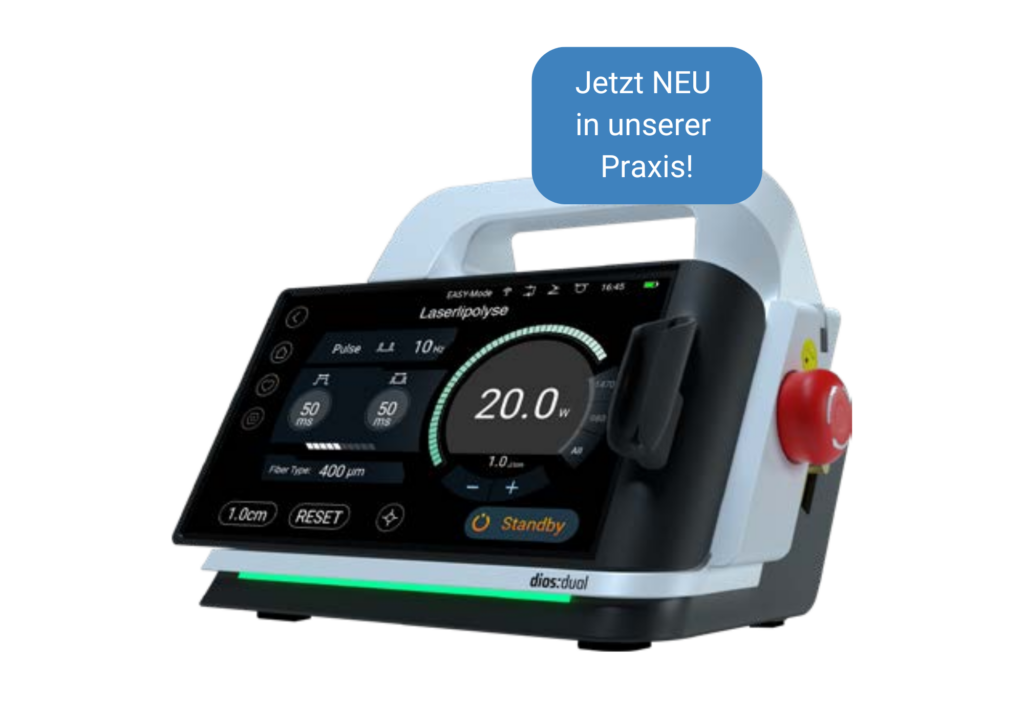Laser treatment in Frankfurt - Innovative laser medicine for your skin
Laser beams are high-energy, bundled light beams that are precisely directed at specific areas of the body during laser treatment in order to have a targeted effect.
During laser therapy, specific target structures, such as the blood pigment hemoglobin or certain skin layers, are selectively heated by the laser light and treated without damaging surrounding tissue.
This method is used successfully in our practice in Frankfurt for a variety of skin diseases, vascular changes and cosmetic procedures. These include skin rejuvenation, the removal of unwanted pigmentation marks and permanent hair removal. Depending on the diagnosis and the skin changes, different specialized laser devices are used.
Below we present the most frequently used laser devices in our practice:

Nd: YAG laser
The Nd: YAG laser with 1064 nm is ideal for the treatment of superficial vessels. By using the laser to target the red blood pigment (hemoglobin), the laser can be used specifically for the vascular changes mentioned below without damaging healthy tissue:
- Single, dilated veins (telangiectasia)
- Rosacea
- Extensive reddening of the skin (often on the cheeks)
- Couperose (vascular dilatation of the face)
- Hemangiomas (blood sponges)
- Vascular spiders, spider nevi (spider-shaped veins)
- Spider veins (small veins on the legs)


Erbium: YAG laser
The Erbium: YAG laser is considered the gold standard in laser medicine and enables high-precision, fully ablative or fractional ablation of the skin. At our practice in Frankfurt, we use this modern procedure to selectively remove unwanted tissue without damaging the surrounding tissue. Treatment with the Erbium: YAG laser leads to scar-free results, particularly in the case of superficial skin changes.
In fractional mode, the Erbium: YAG laser is ideal for facial skin rejuvenation and the treatment of acne scars. Collagen production and pore reduction are stimulated. The wound heals within a few days.
This versatile laser is particularly suitable for the removal of benign skin lesions such as:
- Actinic keratoses (precursors of white skin cancer)
- Age-related warts (seborrheic keratoses)
- Viral warts
- Scar treatment (including acne scars)
- Nail fungus
- Fat deposits on the eyelids (xanthelasma)
- Fibromas
- Benign birthmarks
- Wrinkle treatment and skin rejuvenation
In our practice for laser treatment in Frankfurt, you benefit from state-of-the-art laser medicine and individual treatment concepts tailored to your needs.
Laser lipolysis
Laser lipolysis complements our range of modern laser treatments with its unique ability to target both the superficial and deep layers of the skin. This non-surgical method tightens sagging skin, stimulates collagen production and reduces excess fatty tissue – ideal for the face and body. The results are characterized by visible tightening and long-term skin improvement.
You can find more information about laser lipolysis treatment in Frankfurt here.

Important information after laser treatment
Please avoid direct sunlight and visits to the solarium after the treatment. Hot baths and saunas should also be avoided for about two weeks. You should follow other important care instructions, which we will discuss with you individually, for at least a week in order to optimally support the healing process.
How much do laser treatments at the dermatologist in Frankfurt cost?
The cost of laser treatments at our practice in Frankfurt varies depending on the type of treatment and the individual needs of our patients. Here are some price examples for common laser treatments:
- Laser treatment for vascular changes and spider veins: From 180 € per session
- IPL laser treatment for pigment spots: From 180 € per session
- Wrinkle and scar treatment of the face: € 450 per session
- Laser treatment for nail fungus: from €90 per session
- Laser hair removal: From €90, e.g. for upper lip and chin
- Laser treatment for benign skin changes: From 110 €
We recommend that you come to our practice for an individual consultation to discuss the exact costs of laser treatment and the treatment plan.
Does health insurance cover the costs of facial laser treatment?
If there is a medical indication, private health insurance usually covers the costs of the laser treatments mentioned. However, statutory health insurance companies do not usually cover the costs.
How long does it take to heal after laser treatment?
After the laser treatment, the treated skin areas are covered with a plaster or small bandage. A crust forms within a few days, which falls off after around 10 days, allowing the wound to heal and new, healthy skin tissue to emerge.
How many sessions are necessary for a successful laser treatment?
The number of sessions varies depending on the treatment goal and skin type. A single session can often be sufficient for minor skin changes or vascular problems, while deeper treatments such as skin rejuvenation or scar treatment may require several sessions at intervals of a few weeks.


